Endless Harvest – IELTS Reading Answers
5 min read
Updated On
-
Copy link
Table of Contents

Limited-Time Offer : Access a FREE 10-Day IELTS Study Plan!
The IELTS Academic Reading: Cambridge Reading Sample; ‘Endless Harvest’ with answers. The post will discuss the answers to questions 14-26. The headline of the passage is ‘Endless Harvest’
Endless Harvest
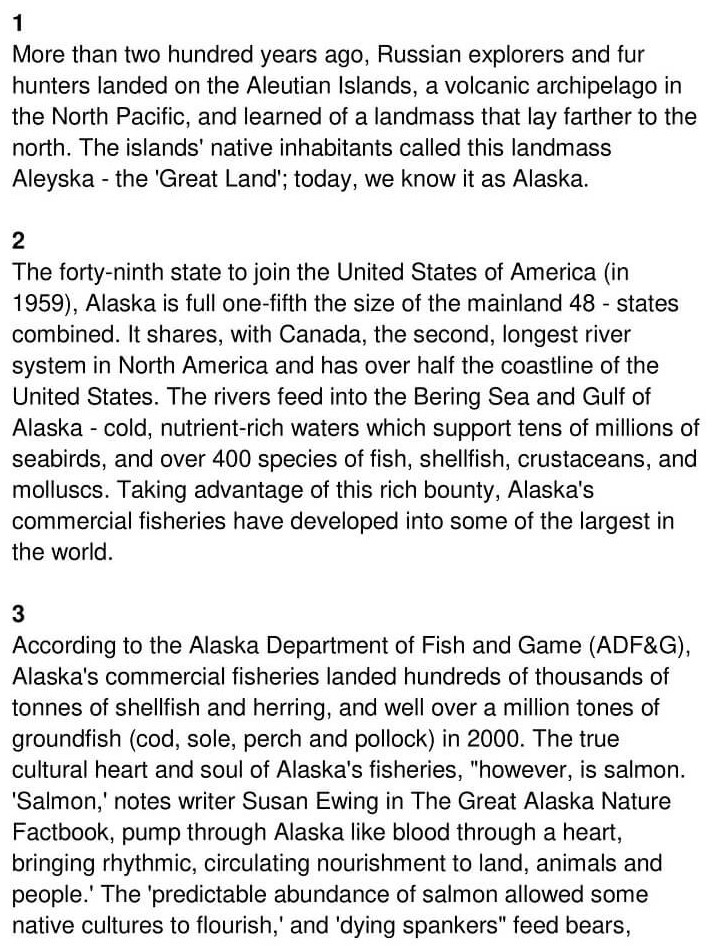
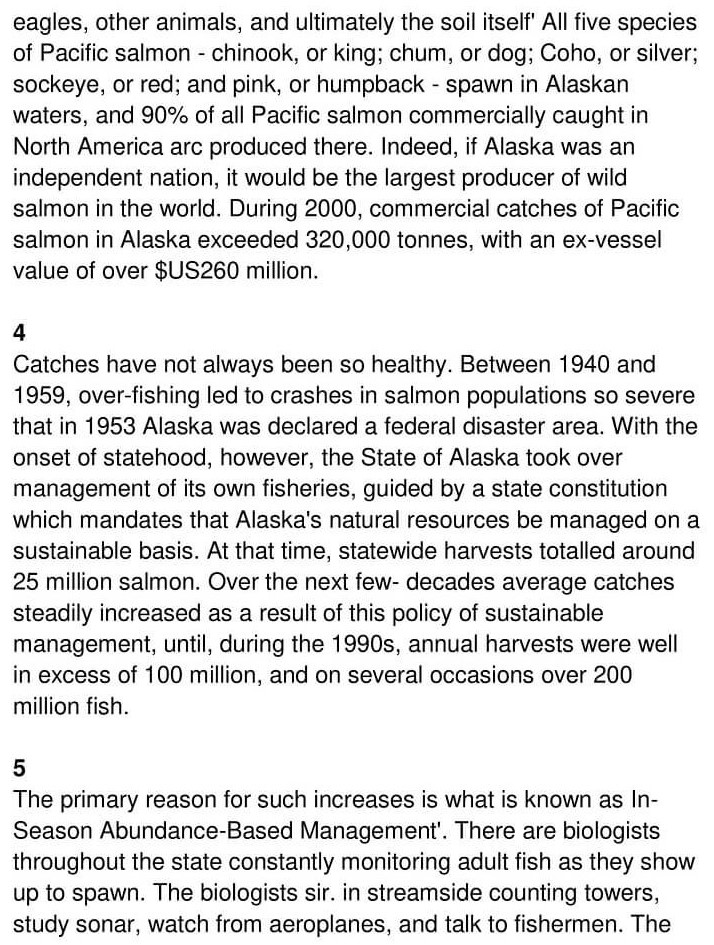
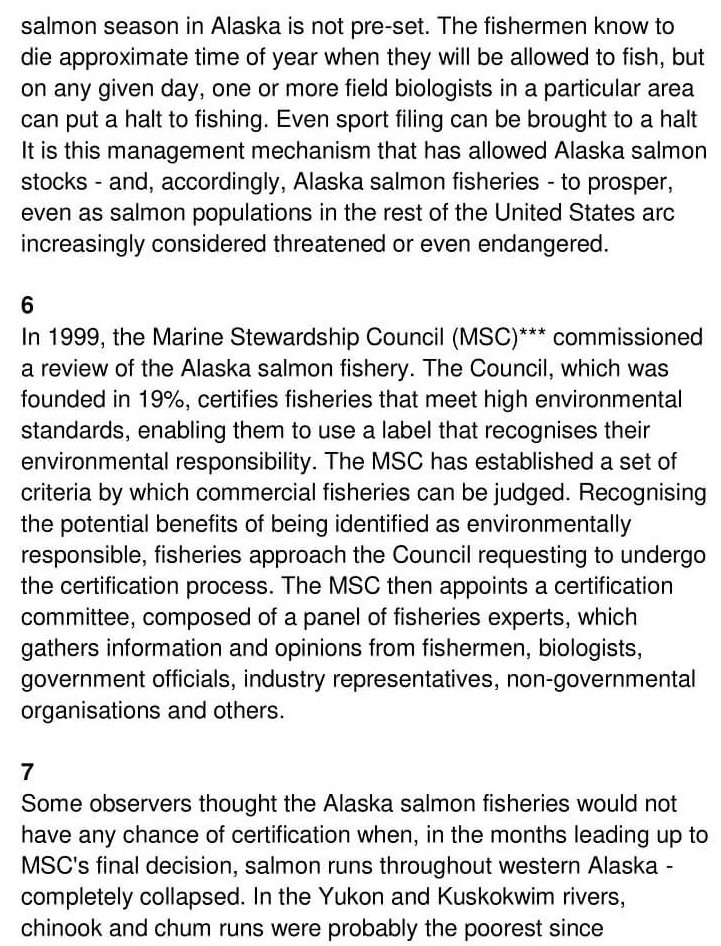
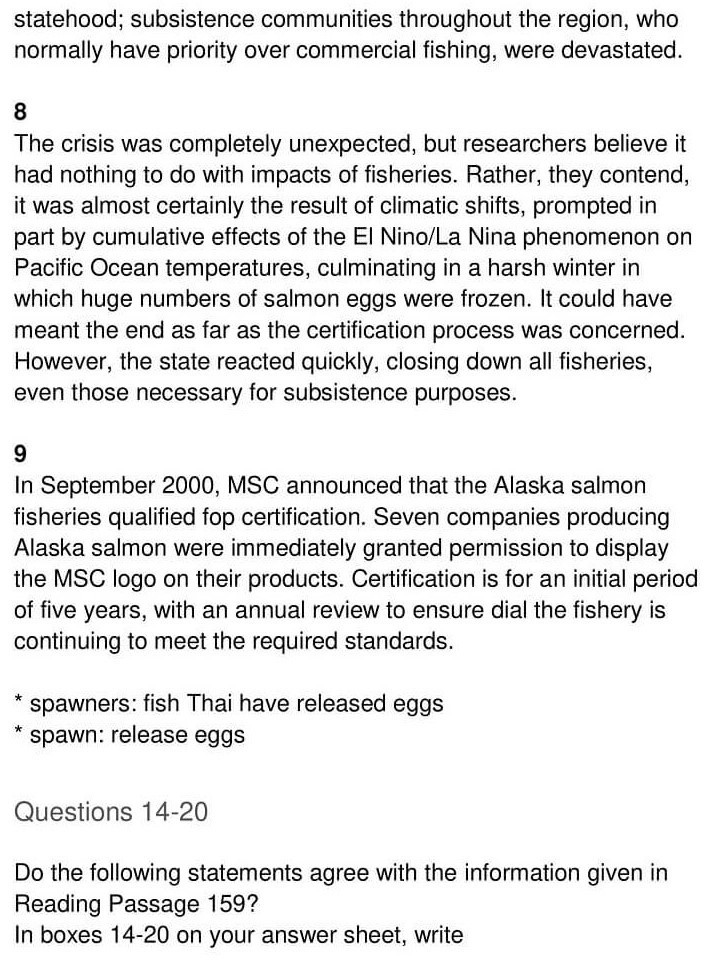
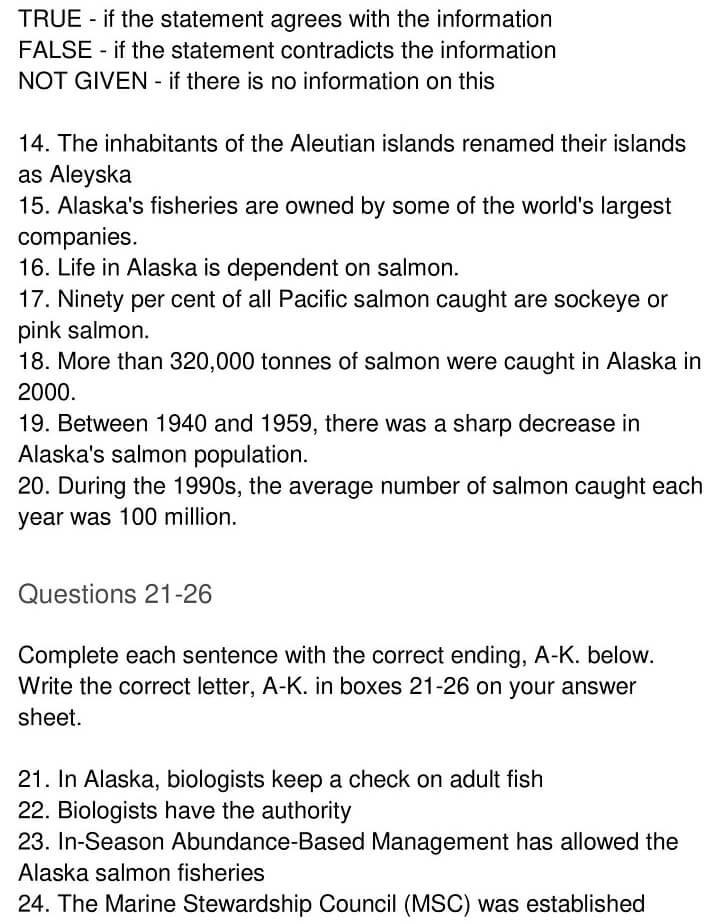
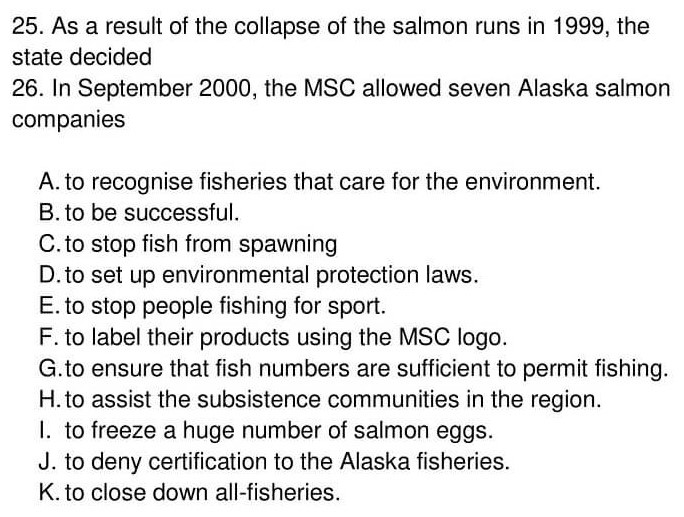
Answers
Unlock Answers
| Question Number | Answers | Explanation |
|---|---|---|
| 14. | False | Paragraph 1 mentions that Russian explorers and fur hunters landed on the ‘Aleutian Islands’, a volcanic archipelago in the North Pacific. ‘‘The islands’ native inhabitants’ (inhabitants of the Aleutian islands) ‘called this land mass Aleyska, the ‘Great Land’’; today, we know it as Alaska. So, the inhabitants called it Aleyska and today, it is renamed Alaska. As the statement contradicts the information, the answer is ‘FALSE’. |
| 15. | Not Given | The last line of paragraph 2 reveals that taking advantage of this rich bounty (over 400 species of fish, shellfish, crustaceans, and molluscs), Alaska’s commercial fisheries have developed into some of the largest in the world. There is no further reference to the ownership of the fisheries of Alaska. So, the answer is ‘NOT GIVEN’. |
| 16. | True | Paragraph 3 refers to writer Susan Ewing who in The Great Alaska Nature Factbook says that ‘salmon pumps through Alaska like blood through a heart, bringing rhythmic, circulating nourishment to land, animals and people.’. This statement proves that life in Alaska is dependent on salmon. As the statement agrees with the information, the answer is ‘TRUE’. |
| 17. | Not Given | In paragraph 3, the author states that all five species of Pacific salmon – chinook, or king; chum, or dog; coho, or silver; sockeye, or red; and pink, or humpback – spawn** in Alaskan waters, and ‘90% of all Pacific salmon commercially caught in North America are produced there’. But the author does not specify the kind of salmon that is caught in North America. Hence, the answer is NOT GIVEN. |
| 18. | True | Paragraph 3 points out that ‘during 2000’, commercial ‘catches of Pacific salmon in Alaska’ ‘exceeded 320,000 tonnes’ (more than 320,000 tonnes), with an ex-vessel value of over $US 260 million. As the statement agrees with the information, the answer is ‘TRUE’. |
| 19. | True | Paragraph 4 brings out the fact that ‘between 1940 and 1959’, overfishing led to ‘crashes in salmon populations’ (sharp decrease in salmon population) so severe that in 1953 ‘Alaska’ was declared a federal disaster area. As the statement agrees with the information, the answer is ‘TRUE’. |
| 20. | False | Paragraph 4 declares that ‘during the 1990s’, ‘annual harvests’ (average number each year) were well in ‘excess of 100 million’, and on several occasions ‘over 200 million’ fish. This means that the average production of salmon each year was always more than 100 million. As the statement contradicts the information, the answer is ‘FALSE’. |
| 21. | G | Paragraph 5 communicates that there are ‘biologists’ throughout the state ‘constantly monitoring’ (keep a check) ‘adult fish’ as they show up to spawn. The salmon season in Alaska is not pre-set. The fishermen know the approximate time of year when they will be allowed to fish, but on any given day, one or more field biologists in a particular area can put a halt to fishing. It is this ‘management mechanism that has allowed Alaska salmon stocks to prosper’. Therefore, until the biologists find out that the salmon stock is sufficient, they can stop fishermen from fishing. Hence, the answer is G (to ensure that fish numbers are sufficient to permit fishing). |
| 22. | E | Paragraph 5 suggests that there are biologists throughout the state constantly monitoring adult fish as they show up to spawn. Due to their guard, ‘sport fishing’ (fishing for sports) can be ‘brought to a halt’ (stopped). Hence, the answer is E (to stop people fishing for sports). |
| 23. | B | At the end of paragraph 4, it is noted that during the 1990s, annual harvests were well in excess of 100 million, and on several occasions over 200 million fish. In the first sentence of paragraph 5, it is added that the ‘primary reason for such increases is ‘In-Season Abundance-Based Management’’. It is this management mechanism that has allowed ‘Alaska salmon stocks – and, accordingly, ‘Alaska salmon fisheries’ — ‘to prosper’ (to be successful). Hence, the answer is B (to be successful). |
| 24. | A | Paragraph 6 puts forward the fact that the ‘Marine Stewardship Council (MSC)***’, which ‘was founded in 1996’, ‘certifies fisheries’ that ‘meet high environmental standards’, enabling them to use a label that recognises their environmental responsibility, that is, they are taking care of the environment. Hence, the answer is A (to recognise fisheries that care for the environment). |
| 25. | K | In paragraph 6, the author mentions that in 1999, the Marine Stewardship Council (MSC)*** commissioned a review of the Alaska salmon fishery. In the first sentence of paragraph 7, it is written that some observers thought the Alaska salmon fisheries would not have any chance of certification when, ‘in the months leading up to MSC’s final decision, salmon runs throughout western Alaska completely collapsed’. In the 8th paragraph, we come to know that, as a result of the collapse, the ‘state reacted quickly, closing down all fisheries’, even those necessary for subsistence purposes. Hence, the answer is K (to close down all fisheries). |
| 26. | F | Paragraph 9 concludes that in September 2000, ‘MSC’ announced that the Alaska salmon fisheries qualified for certification . Seven companies producing Alaska salmon were immediately ‘granted permission’ (allowed) to display’ (label) ‘the MSC logo on their products’. Hence, the answer is F (to label their products using the MSC logo). |
Check More IELTS Reading Answers
Also check :
Practice IELTS Reading based on question types

Start Preparing for IELTS: Get Your 10-Day Study Plan Today!
Recent Articles

Nehasri Ravishenbagam

Haniya Yashfeen

Haniya Yashfeen

Haniya Yashfeen
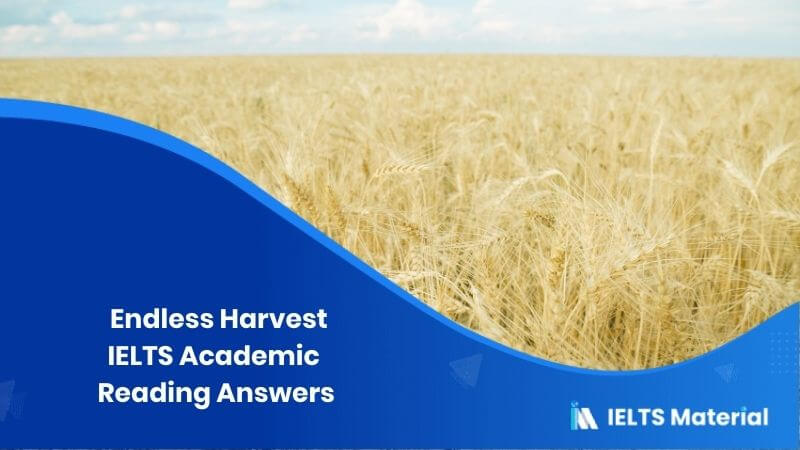



Post your Comments